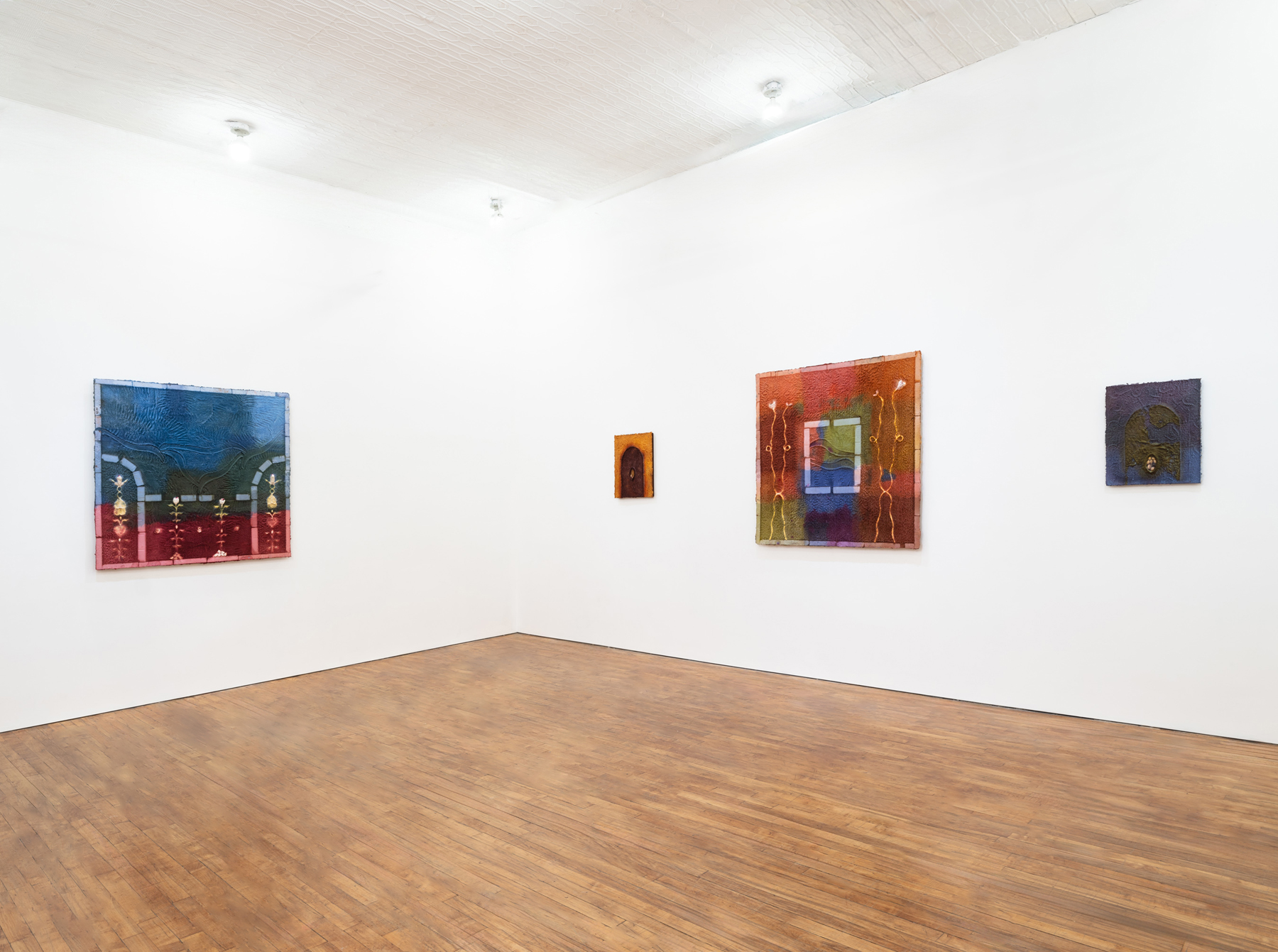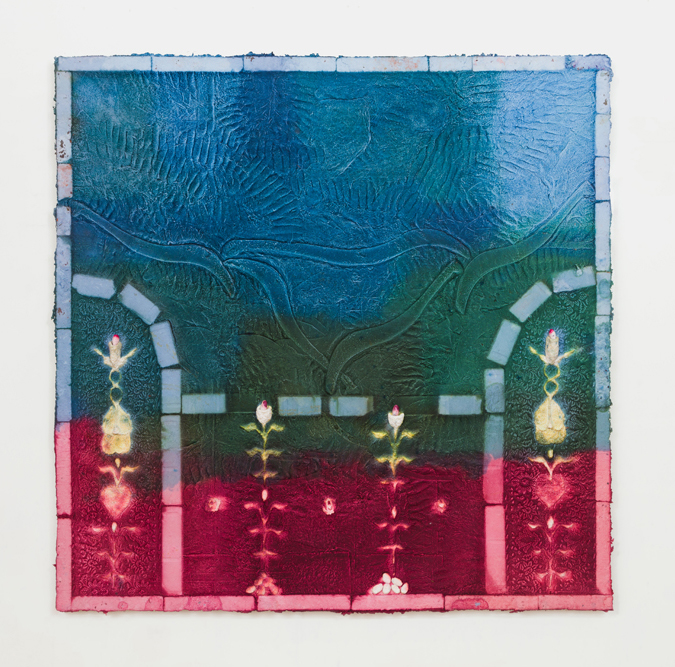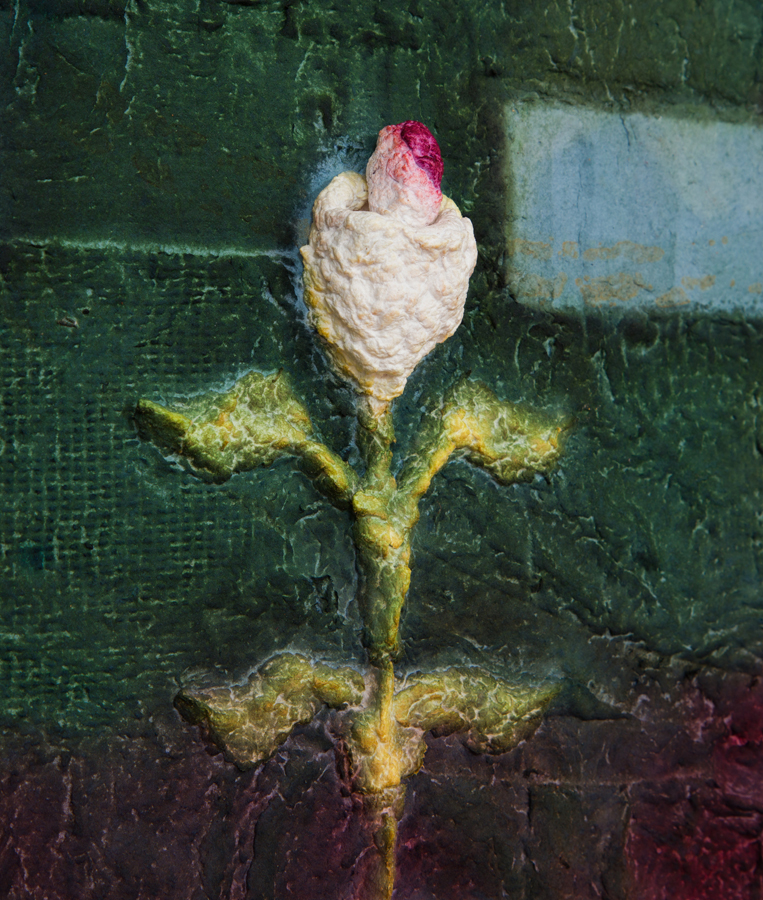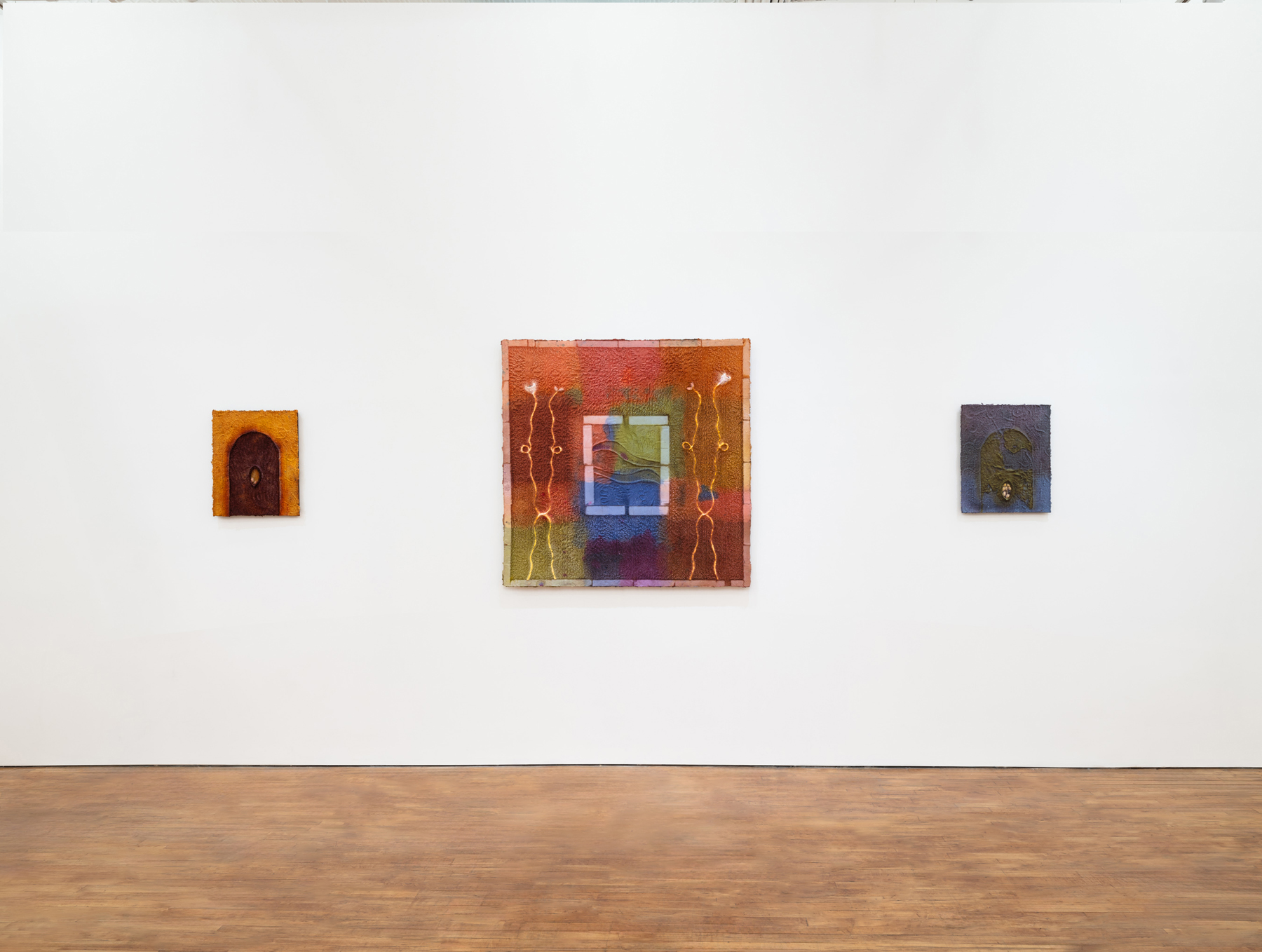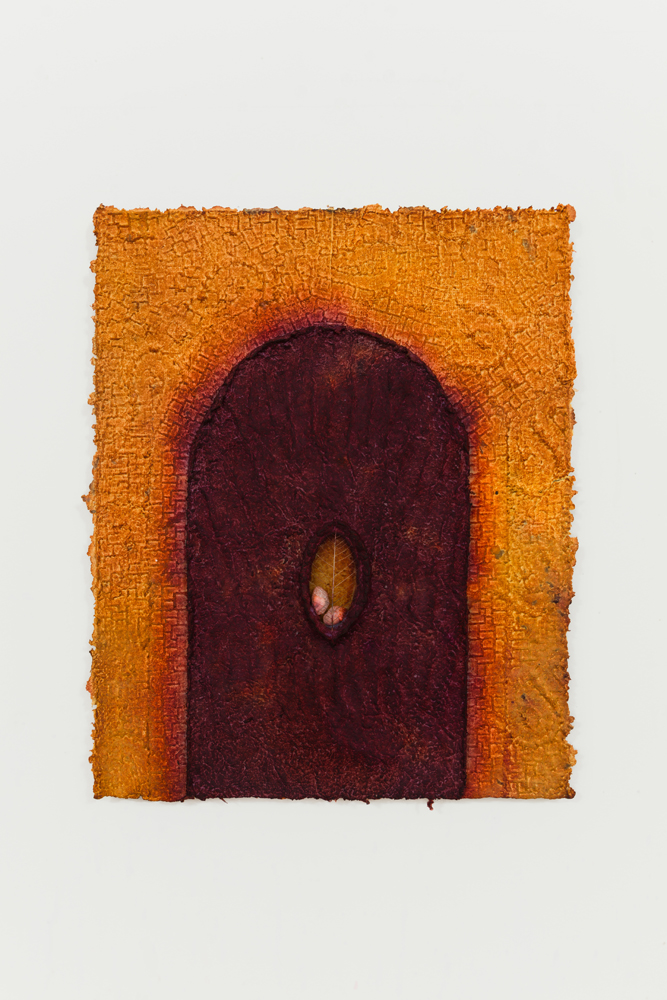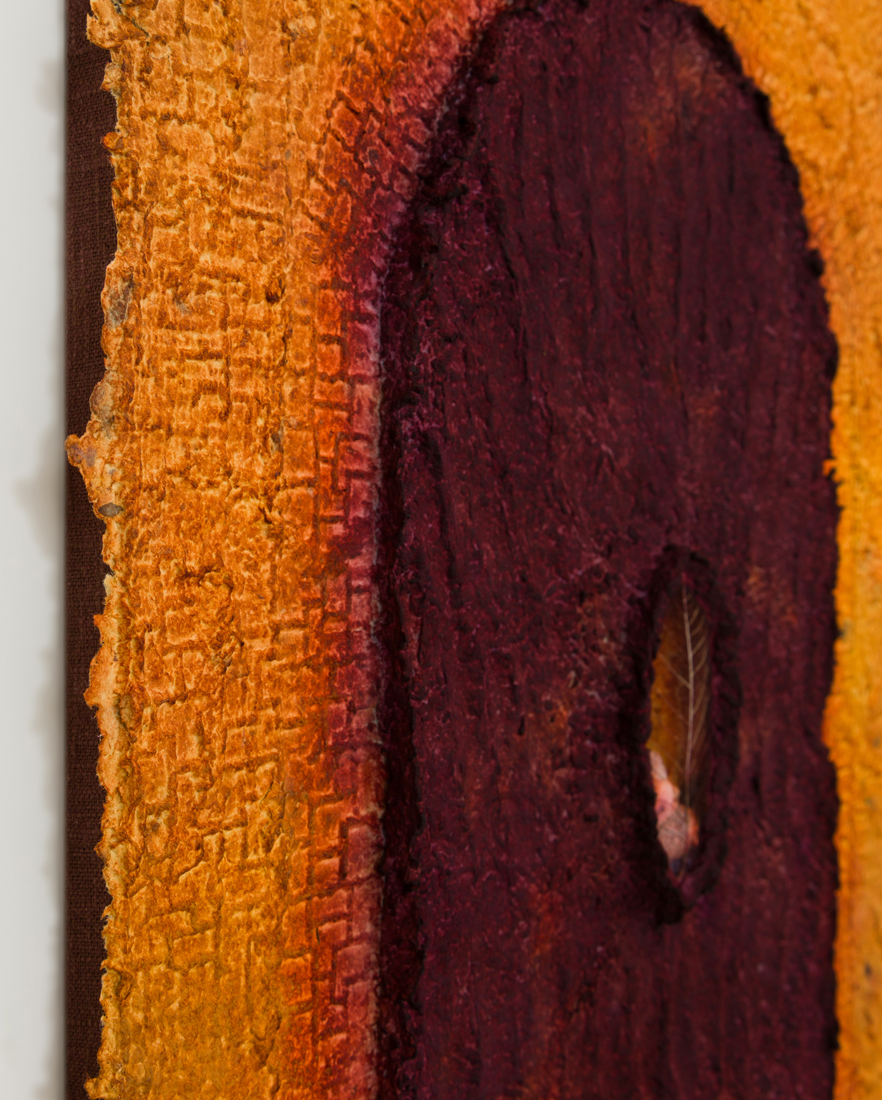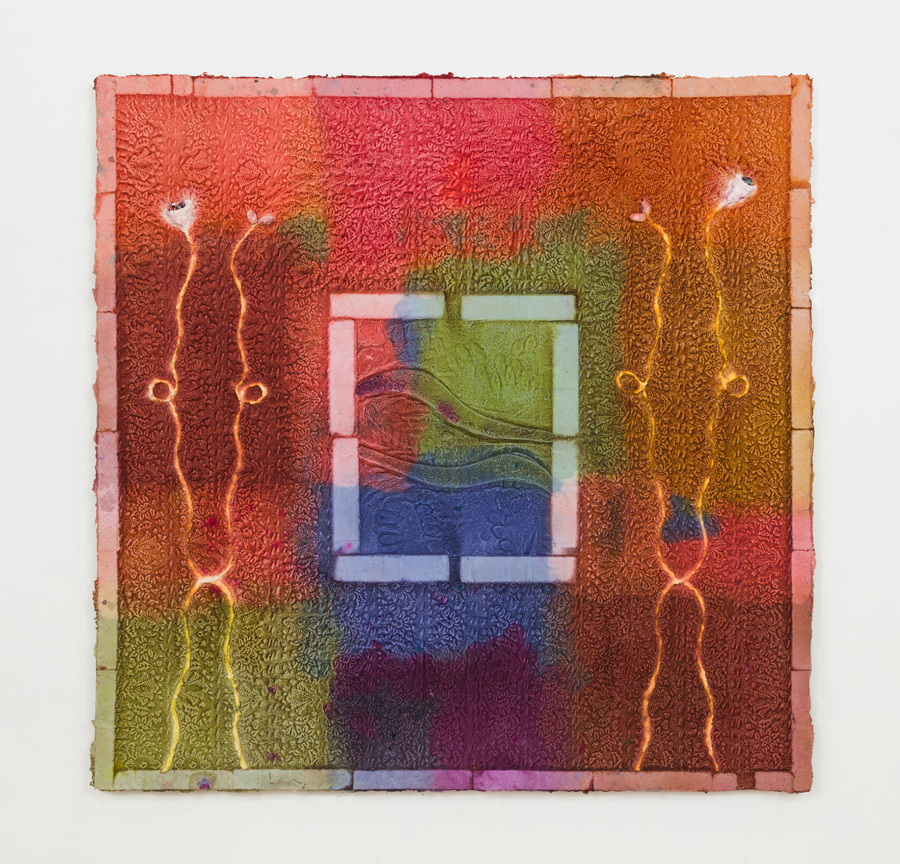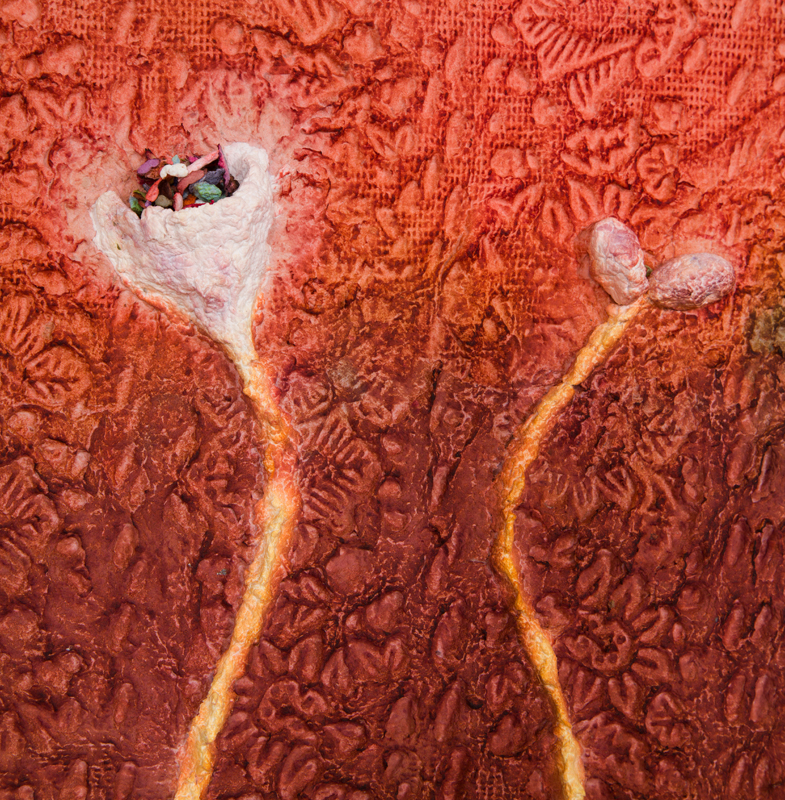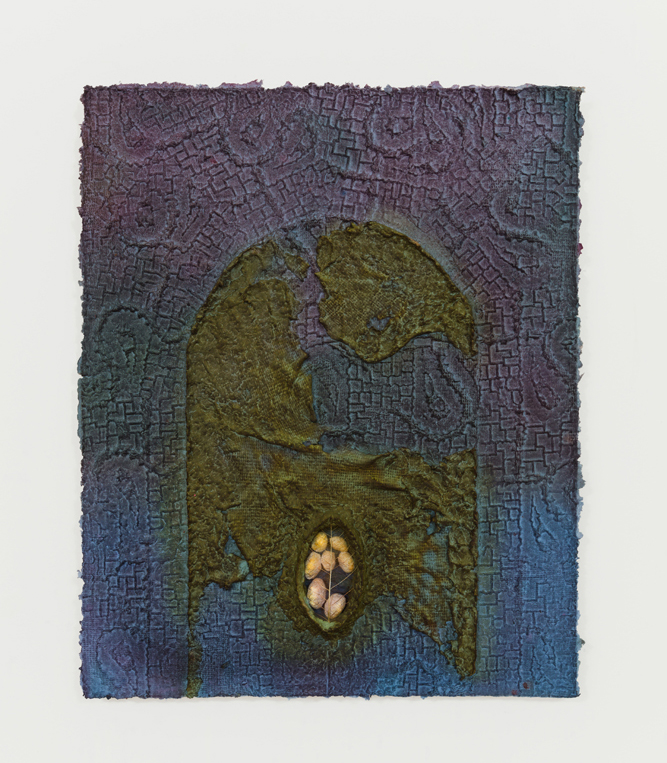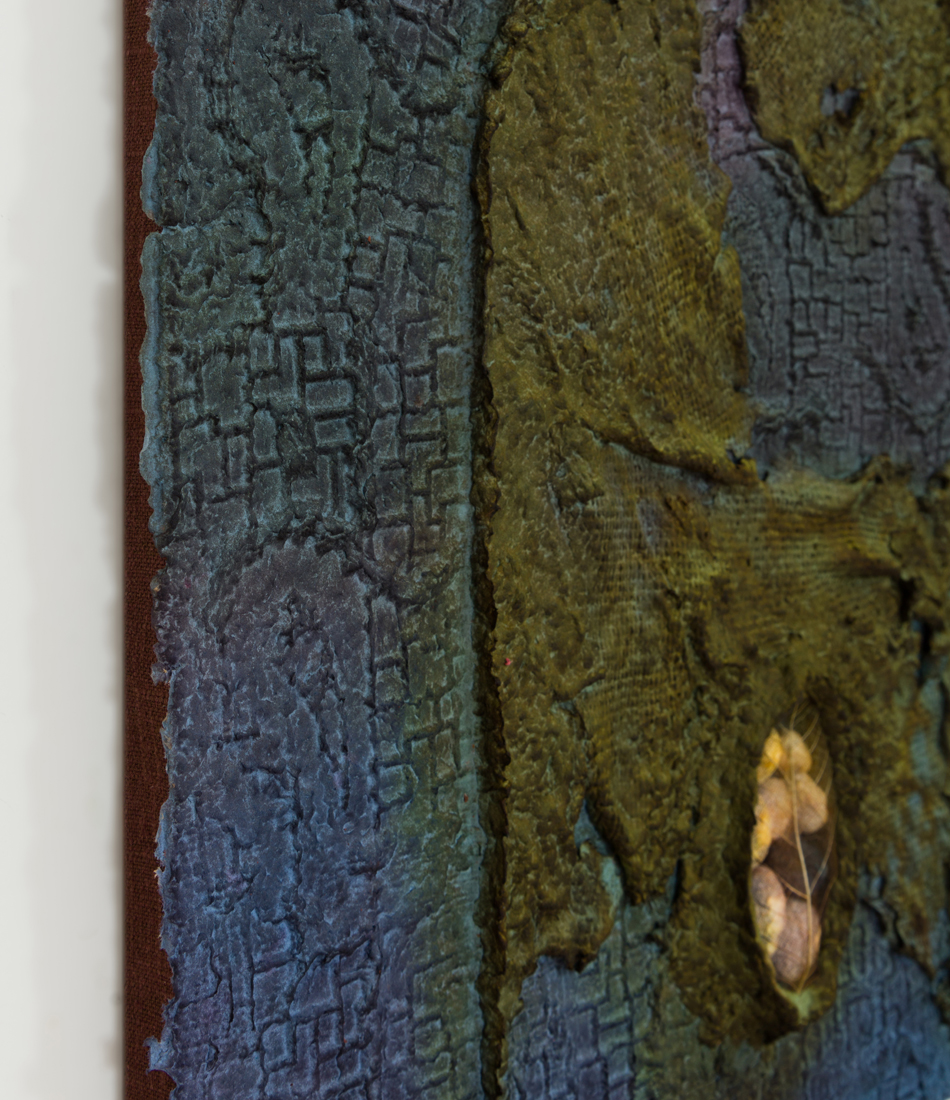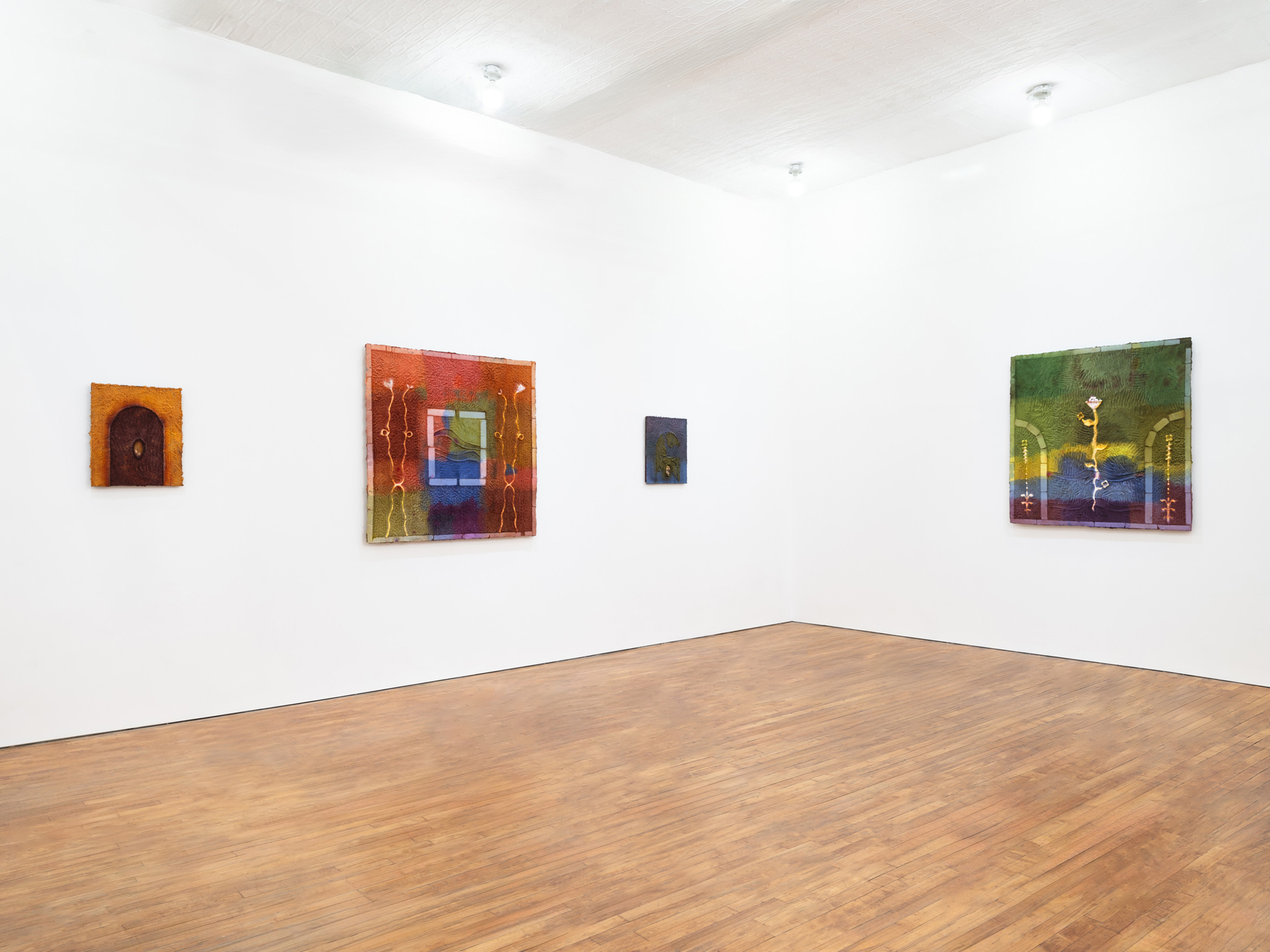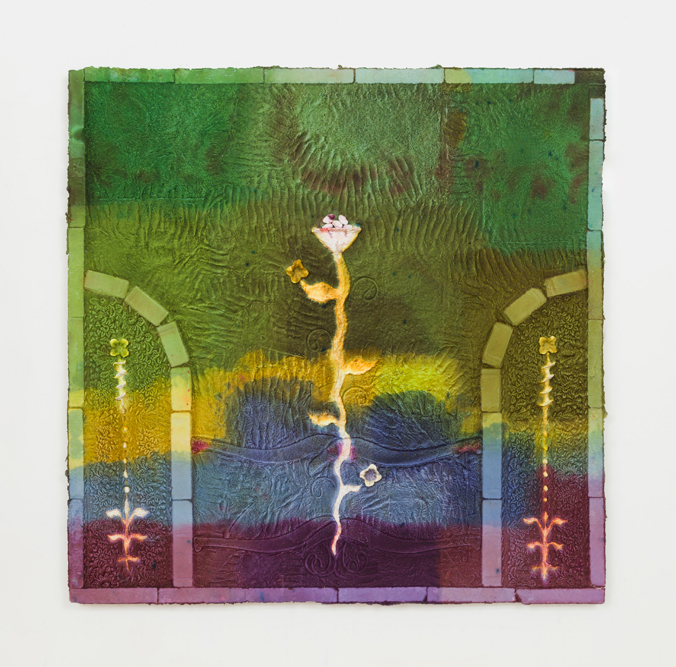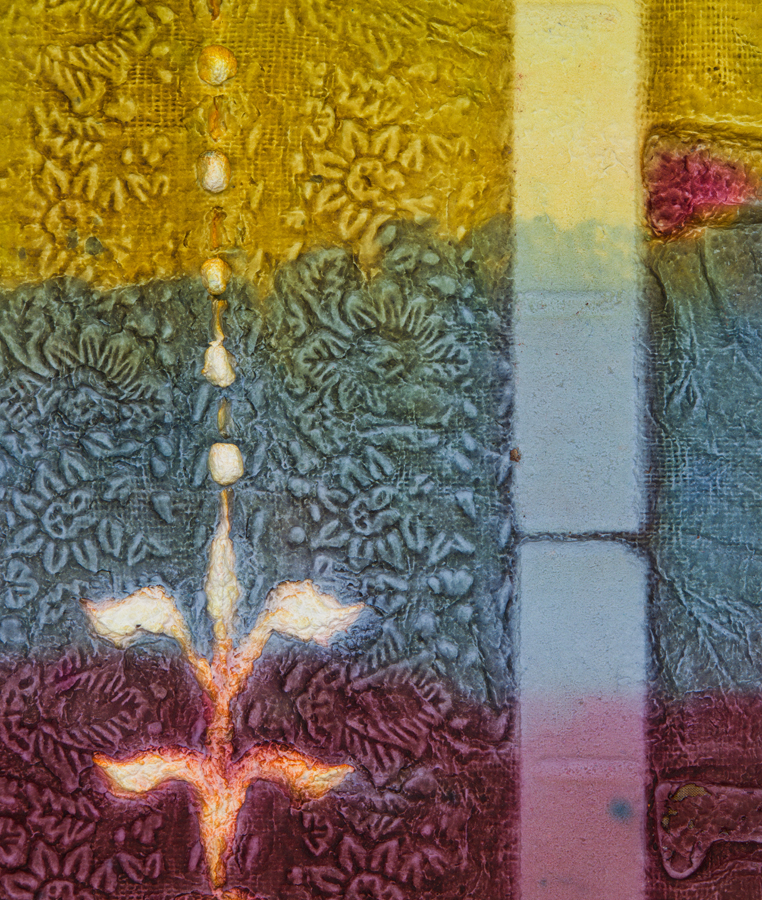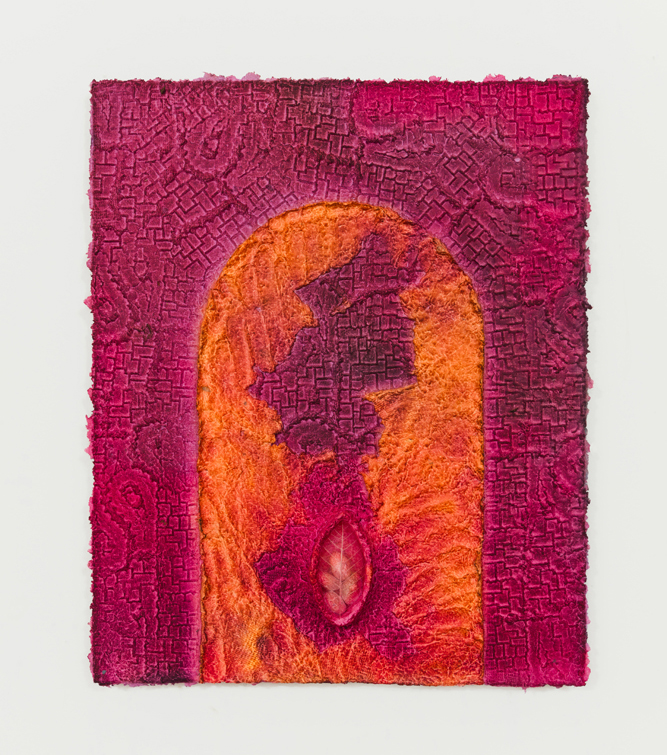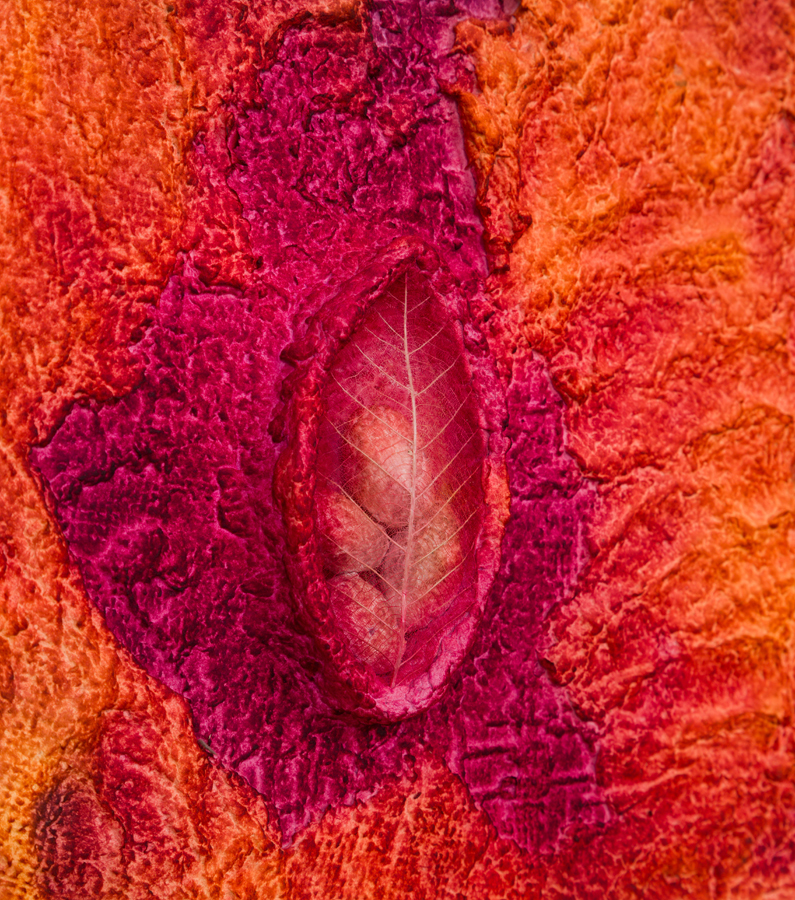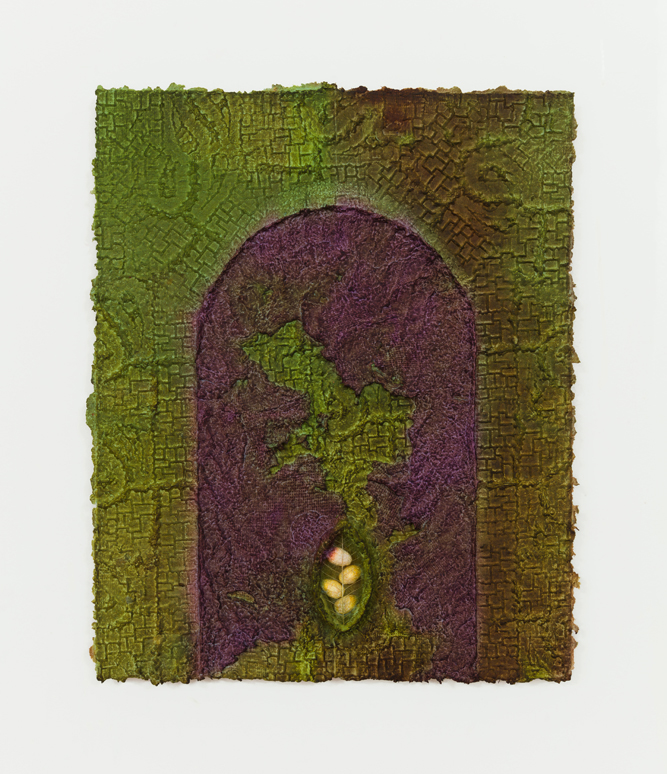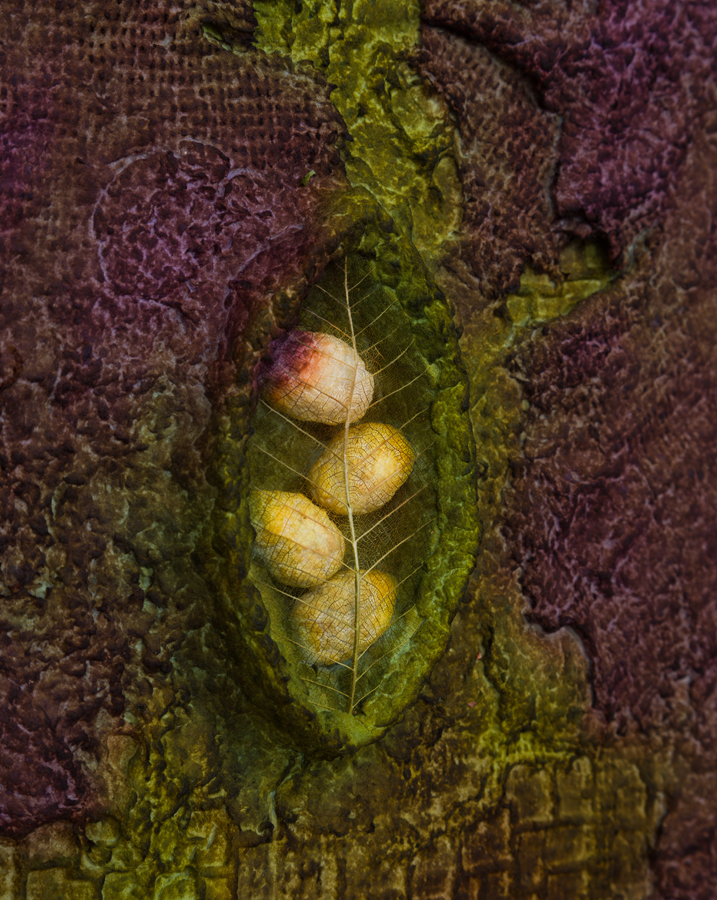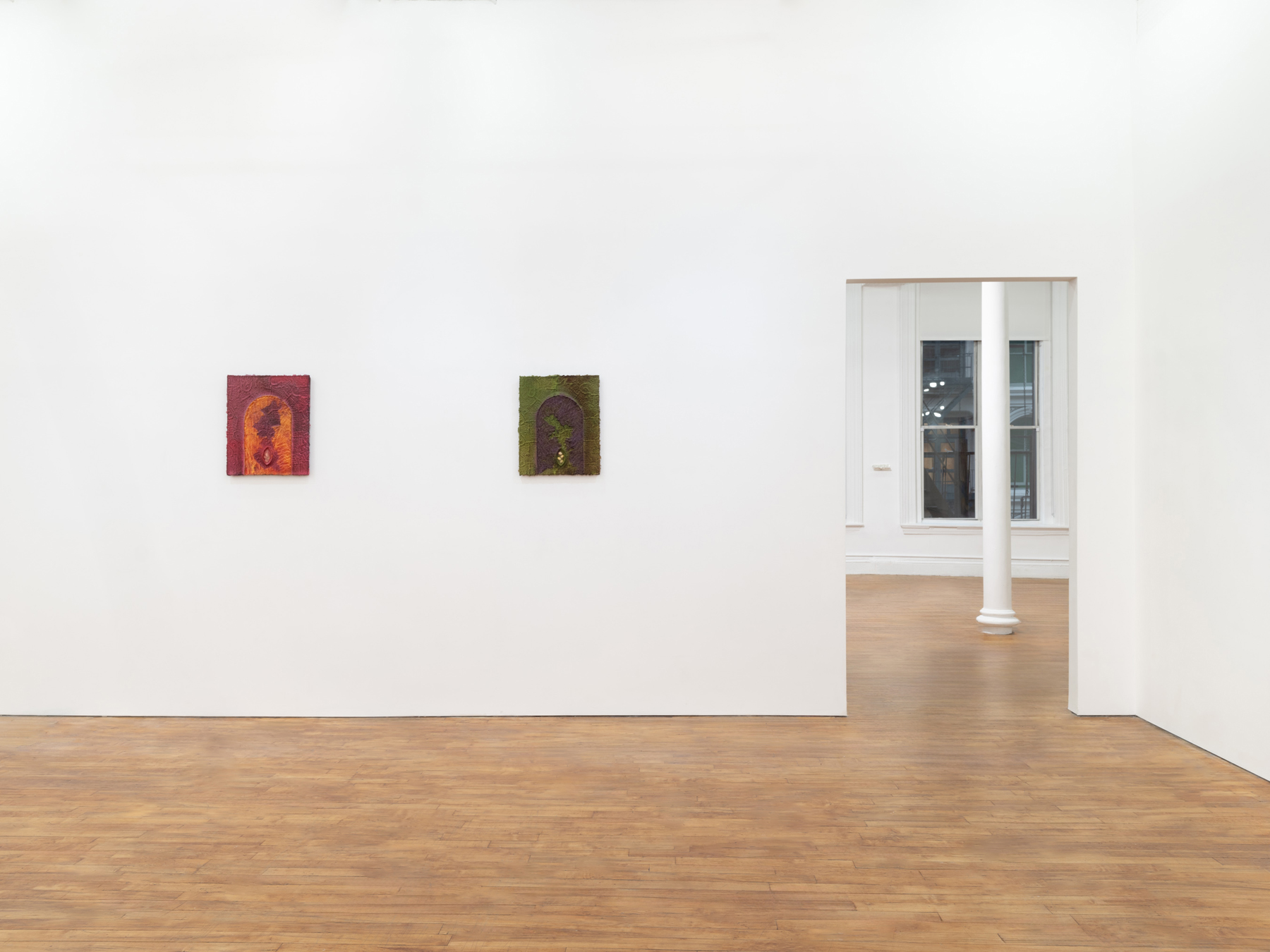In an art practice centered around recording memory and preserving the past, how does one contend with the inevitable loss of recollection? With Unveiling the Ground, her first solo exhibition at Tara Downs, Aryana Minai attempts to cement foundational experiences and the significance they hold through the objects she creates.
The exhibition centers around Bedroom II, an homage to the bedroom Minai inhabited during her childhood and adolescence in Iran. Working in opposition to her fading memories of this space, Minai memorializes the room, using key elements of her practice – stencils and woodblocks sourced from her home country – to mimic the wallpaper pattern she spent countless hours encircled by.
What this specific space provided Minai is foundational to the life that has followed. It is this room that Minai’s memories often bring her to, a place where she was safe to exist, learn, grow, explore, and dream while experiencing girlhood. Equally important to recreating the indoor space she was nurtured by, is considering what was happening outside its walls. As Minai and friends played and maintained normal preteen existences, the world outside her walls was simultaneously engulfed in post-Revolution Iran.
The works in Unveiling the Ground exist as portals to the dreams Minai had in this room and the dreams that have visited her in the years since immigrating to the US as a teenager. As she grows farther away from the life she had in and around that space, Minai pays homage to her origins, remaining involved and calling attention to the ongoing political unrest in Iran, while also honoring the quotidian beauty of her culture.
Now, after residing in the United States for close to 17 years, longer than her time living in Iran, Minai finds herself distant — both physically and emotionally — from her where she came, the place where she feels most herself and at ease. A sense of longing permeates through the work. Each serves as a metaphor, derived from both the elements they are comprised of and the references that exist beyond the surface.
From a material perspective, Minai’s works are born from a laborious process of first producing and then molding paper pulp into various forms that come together as one complete whole. The remains of a prior work always find their way into the next, generating a harmonious cycle of rebirth. The color in this new body of work deviates from the earth-toned palette with which Minai has been known to use. This shift reflects an experience akin to that of a seed sprouting above the ground for the first time, marking a shift in the practice she’s spent years excavating. While in the studio, Minai attempted to tap into the sensation of what one’s first experience of seeing color or witnessing a sunset might feel like to unfamiliar eyes.
The smaller works in the exhibition are part of Minai’s ongoing Seed series, made in homage to the Woman, Life, Freedom movement enduring in Iran. Crafting an enclosed structure with the skeleton of a leaf, the artist creates a womb-like space holding new life forms, representative of the safe spaces she hopes will one day exist for Iranian women.
It’s been said that forgetting is just as important a function of memory as remembering; That we forget to make space for new information as we go through life. Memories that once existed as crystal-clear mementos in our subconscious fade and disappear. Like the loss of a dear childhood friend that we previously couldn’t imagine our lives without, when this occurs, we’re reminded of the passage of time in a very tangible sense. In this transitional moment of losing touch with her earliest memories, Minai remains connected to her home through an active effort to remember.
